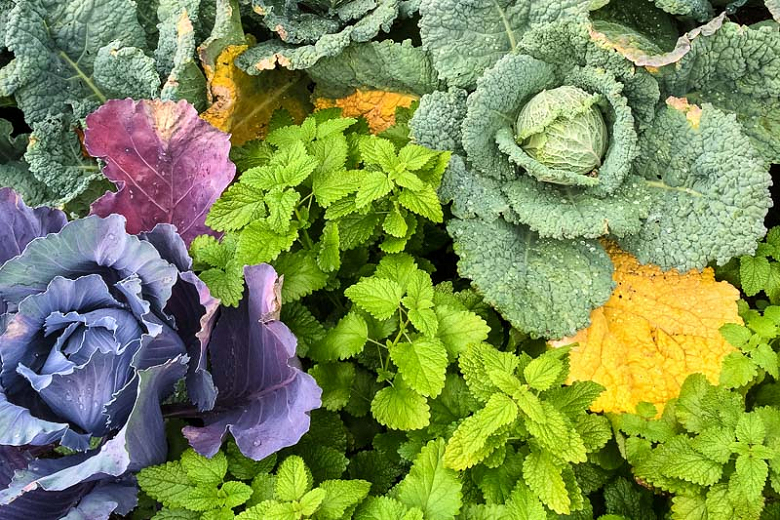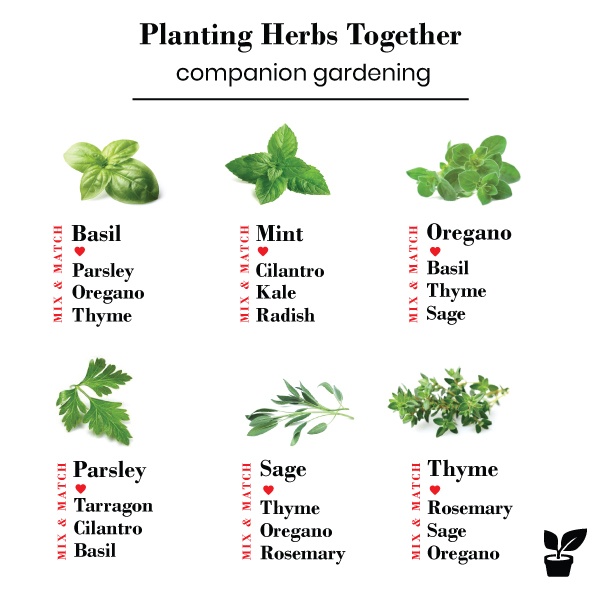Grow Your Mint With Friends: The Best Companion Plants For Spearmint
Grow Your Mint With Friends: The Best Companion Plants for Spearmint
Spearmint is a delicious and versatile herb that can be used in a variety of dishes. It's also a great addition to the garden, as it can help to repel pests and attract pollinators. But did you know that spearmint can also benefit from companion planting?
Companion planting is the practice of planting certain plants together to create a mutually beneficial relationship. When plants are compatible, they can help each other to grow better by providing shade, nutrients, or pest protection.
So, what are the best companion plants for spearmint? Here are a few of the top picks:
- Brassicas: Brassicas, such as broccoli, Brussels sprouts, and cabbage, are a great choice for companion planting with spearmint. The strong scent of mint can help to deter pests that target brassicas, such as cabbage moths and flea beetles.
- Carrots: Carrots and spearmint are a classic companion planting combination. The mint helps to repel carrot flies, which can damage carrot roots. Additionally, the mint's strong scent can help to improve the flavor of carrots.
- Lettuce: Lettuce and spearmint are another great companion planting duo. The mint helps to repel aphids, which can damage lettuce leaves. Additionally, the mint's strong scent can help to keep lettuce pests away.
- Peas: Peas and spearmint are a good companion planting choice because they have similar growing requirements. Both plants prefer full sun and well-drained soil. Additionally, the mint's strong scent can help to deter pests that target peas, such as pea moths.
- Squash: Squash and spearmint are a good companion planting choice because they can help each other to thrive. The mint helps to repel squash bugs, which can damage squash plants. Additionally, the squash's large leaves can help to shade the mint, which can help to prevent it from drying out.
These are just a few of the many companion plants that can benefit spearmint. When choosing companion plants for spearmint, it's important to consider the plants' growing requirements and the pests that they are susceptible to. By planting spearmint with compatible plants, you can create a thriving garden that is both beautiful and productive.
Spearmint is a versatile herb that can be used in a variety of dishes, but it's also a great companion plant for other vegetables and flowers. The strong scent of spearmint can deter pests, such as aphids, cabbage moths, and carrot flies. It can also improve the growth and flavor of other plants.
Some of the best companion plants for spearmint include:
- Carrots: The strong scent of spearmint can help to deter the carrot root fly, which is a common pest of carrots.
- Broccoli: Spearmint can help to improve the growth and flavor of broccoli.
- Cabbage: Spearmint can help to deter cabbage moths, which are a common pest of cabbage.
- Lettuce: Spearmint can help to repel slugs, which can be a problem for lettuce plants.
- Marigolds: Marigolds and spearmint have a complementary scent that can help to attract beneficial insects and deter pests.
If you're looking for more information about spearmint companion plants, I recommend visiting Gardenia Inspiration. This website has a comprehensive list of companion plants for spearmint, as well as information on how to plant and care for spearmint in your garden.
FAQ of spearmint companion plants
Question 1: What are some good companion plants for spearmint?
Answer: Spearmint is a versatile herb that can be paired with a variety of other plants. Some good companion plants for spearmint include:
- Carrots: The strong scent of spearmint can help to deter carrot flies, which are a common pest of carrots.
- Beans: Spearmint can help to improve the nitrogen content of the soil, which is beneficial for beans.
- Tomatoes: Spearmint can help to repel aphids, which are a common pest of tomatoes.
- Basil: Spearmint and basil are both aromatic herbs that can complement each other's flavors.
- Rosemary: Rosemary can help to improve the drainage of the soil, which is beneficial for spearmint.
Question 2: What are some plants that should not be planted near spearmint?
Answer: There are a few plants that should not be planted near spearmint, as they can compete for resources or be susceptible to the same pests and diseases. These plants include:
- Cucumbers: Cucumbers and spearmint both require a lot of water, so planting them together can lead to waterlogged soil.
- Potatoes: Potatoes and spearmint are both susceptible to the same pests and diseases, so planting them together can increase the risk of infection.
- Rhubarb: Rhubarb can suppress the growth of spearmint.
- Asparagus: Asparagus can also suppress the growth of spearmint.
Question 3: How far apart should spearmint plants be planted?
Answer: Spearmint plants can spread aggressively, so it is important to space them at least 12 inches apart. This will help to prevent the plants from competing for resources and will also make it easier to harvest the leaves.
Question 4: What are some tips for planting spearmint?
Answer: Here are some tips for planting spearmint:
- Choose a sunny or partially shaded location with well-draining soil.
- Amend the soil with compost or manure before planting.
- Plant spearmint transplants at the same depth as they were in the nursery container.
- Water the plants well after planting.
- Mulch around the plants to help retain moisture and suppress weeds.
Question 5: How do I care for spearmint plants?
Answer: Spearmint plants are relatively easy to care for. Here are some tips for caring for spearmint plants:
- Water the plants regularly, especially during hot weather.
- Fertilize the plants every few months with a balanced fertilizer.
- Deadhead the flowers to encourage more leaf growth.
- Harvest the leaves as needed.
Image of spearmint companion plants
- Carrots: The strong scent of mint can help deter carrot flies, which are a common pest of carrots.

- Beetroot: Like carrots, beetroot can be protected from carrot flies by planting it near mint.
- Onions: The strong scent of mint can also help deter onion flies, which are another common pest of onions.

- Radishes: Some people believe that planting radishes near mint can give the radishes added flavor.

- Basil: Basil is a good companion plant for mint because it helps to attract beneficial insects, such as ladybugs and hoverflies.

Post a Comment for "Grow Your Mint With Friends: The Best Companion Plants For Spearmint"